Christopher W Lowery
age ~74
from McLean, VA
- Also known as:
-
- Christopher Wickliffe Lowery
- Christophe W Lowery
- Christo W Lowery
- Christoph W Lowery
- Phone and address:
-
6803 Hampshire Rd, Mc Lean, VA 22101
7033564411
Christopher Lowery Phones & Addresses
- 6803 Hampshire Rd, McLean, VA 22101 • 7033564411
- Mc Lean, VA
- Menlo Park, CA
- Los Altos, CA
- Mountain View, CA
- Scottsdale, AZ
- Vienna, VA
Work
-
Company:One good window
-
Address:1902 Mcallister St, San Francisco, CA 94115
-
Phones:4155056055
-
Position:Ceo
-
Industries:Petroleum Bulk stations and Terminals
Resumes

Christopher Lowery
view sourceLocation:
Champaign, Illinois
Industry:
Writing and Editing
Education:
University of Illinois at Urbana-Champaign 2010 - 2014
BA, Communication & Political Science Benton Consolidated High School 2006 - 2010
BA, Communication & Political Science Benton Consolidated High School 2006 - 2010
Skills:
Social Media
Storytelling
Editing
Public Speaking
Press Releases
Legislative Research
Storytelling
Editing
Public Speaking
Press Releases
Legislative Research
Awards:
Illinois General Assembly Scholarship
Illinois General Assembly
Outstanding Senior
Southern Illinois Society for High School Achievement
Outstanding Senior
Benton Consolidated High School
Illinois General Assembly
Outstanding Senior
Southern Illinois Society for High School Achievement
Outstanding Senior
Benton Consolidated High School

Christopher Lowery
view sourceLocation:
United States
Name / Title
Company / Classification
Phones & Addresses
CEO
One Good Window
Petroleum Bulk stations and Terminals
Petroleum Bulk stations and Terminals
1902 Mcallister St, San Francisco, CA 94115
HOMETECH INSPECTION SERVICES LTD
LOWRY FLOORING, LLC
CAC CONSTRUCTION LLC
Us Patents
-
Red-Deficiency-Compensating Phosphor Led
view source -
US Patent:6351069, Feb 26, 2002
-
Filed:Feb 18, 1999
-
Appl. No.:09/252207
-
Inventors:Christopher H. Lowery - Fremont CA
Gerd Mueller - San Jose CA
Regina Mueller - San Jose CA -
Assignee:LumiLeds Lighting, U.S., LLC - San Jose CA
-
International Classification:H05B 3314
-
US Classification:313512, 313503, 313504, 313501
-
Abstract:A light emitting device and a method of fabricating the device utilize a supplementary fluorescent material that radiates secondary light in the red spectral region of the visible light spectrum to increase the red color component of the composite output light. The secondary light from the supplementary fluorescent material allows the device to produce âwhiteâ output light that is well-balanced with respect to color for true color rendering applications. The supplementary fluorescent material is included in a fluorescent layer that is positioned between a die and a lens of the device. The die is preferably a GaN based die that emits light having a peak wavelength of 470 nm. The fluorescent layer also includes a main fluorescent material. Preferably, the main fluorescent material is Cerium (Ce) activated and Gadolinium (Gd) doped Yttrium Aluminum Garnet (YAG) phosphor (âCe:YAG phosphorâ). In a first preferred embodiment, the supplementary fluorescent material is a compound that is produced by doping the Ce:YAG phosphor with a trivalent ion of Praseodymium (Pr).
-
Non-Incandescent Lightbulb Package Using Light Emitting Diodes
view source -
US Patent:6504301, Jan 7, 2003
-
Filed:Sep 3, 1999
-
Appl. No.:09/390006
-
Inventors:Christopher H. Lowery - Fremont CA
-
Assignee:LumiLeds Lighting, U.S., LLC - San Jose CA
-
International Classification:H01J 6304
-
US Classification:313512, 362800
-
Abstract:An LED package and a method of fabricating the LED package utilize a prefabricated fluorescent member that contains a fluorescent material that can be separately tested for optical properties before assembly to ensure the proper performance of the LED package with respect to the color of the output light. The LED package includes one or more LED dies that operate as the light source of the package. Preferably, the fluorescent material included in the prefabricated fluorescent member and the LED dies of the LED package are selectively chosen, so that output light generated by the LED package duplicates natural white light. In a first embodiment of the invention, the prefabricated fluorescent member is a substantially planar plate having a disk-like shape. In a second embodiment, the prefabricated fluorescent member is a non-planar disk that conforms to and is attached to the inner surface of a concave lens. In this embodiment, the optical properties of the fluorescent member are tested by examining an integrated unit formed by the concave lens and the attached fluorescent member.
-
Stenciling Phosphor Layers On Light Emitting Diodes
view source -
US Patent:6650044, Nov 18, 2003
-
Filed:Oct 13, 2000
-
Appl. No.:09/688053
-
Inventors:Christopher H. Lowery - Fremont CA
-
Assignee:Lumileds Lighting U.S., LLC - San Jose CA
-
International Classification:H01J 162
-
US Classification:313502, 313503, 313506, 313498, 313499
-
Abstract:A method for forming a luminescent layer on a light emitting semiconductor device includes positioning a stencil on a substrate such that a light emitting semiconductor device disposed on the substrate is located within an opening in the stencil, depositing a stenciling composition including luminescent material in the opening, removing the stencil from the substrate, and curing the stenciling composition to a solid state. The resulting light emitting device includes a stack of layers including semiconductor layers comprising an active region and a luminescent material containing layer having a substantially uniform thickness disposed around at least a portion of the stack. A surface of the luminescent material containing layer not adjacent to the stack substantially conforms to a shape of the stack. In one embodiment, the light emitting device emits white light in a uniformly white spatial profile.
-
Tri-Color, White Light Led Lamps
view source -
US Patent:6686691, Feb 3, 2004
-
Filed:Sep 27, 1999
-
Appl. No.:09/405947
-
Inventors:Gerd O Mueller - San Jose CA
Christopher H Lowery - Fremont CA -
Assignee:Lumileds Lighting, U.S., LLC - San Jose CA
-
International Classification:H01J 162
-
US Classification:313503, 313498, 313501, 25230165
-
Abstract:The present invention relates to a tri-color lamp for generating white light. In particular, the invention relates to a phosphor mixture comprising two phosphors having host sulfide materials that can absorb radiation emitted by a light emitting diode, particularly a blue LED. This arrangement provides a mixing of three light sourcesâlight emitted from the two phosphors and unabsorbed light emitted from the LED. The phosphors can contain the same dopant, such as a rare earth ion, to allow matching of the phosphors in relation to the LED emitted radiation. Power fractions of each of the light sources can be varied to achieve good color rendering. The present invention also relates to an alternative to a green LED comprising a single green phosphor that absorbs radiation from a blue LED. A resulting device provides green light of high absorption efficiency and high luminous equivalent values.
-
Reduction Of Contamination Of Light Emitting Devices
view source -
US Patent:6878973, Apr 12, 2005
-
Filed:Aug 23, 2001
-
Appl. No.:09/938407
-
Inventors:Christopher Haydn Lowery - Fremont CA, US
Troy Trottier - San Jose CA, US -
Assignee:Lumileds Lighting U.S., LLC - San Jose CA
-
International Classification:H01L033/00
H01L023/29 -
US Classification:257100, 257 98, 257 99, 257789, 257795
-
Abstract:A light emitting device and a method of making the same are provided. The light emitting device includes a light emitting diode and a submount. A phosphormaterial is disposed around at least a portion of the light emitting diode. An underfill is disposed between a first surface of the light emitting diode and a first surface of the submount. The underfill reduces contamination of the light emitting diode by the phosphor material.
-
Stenciling Phosphor Layers On Light Emitting Diodes
view source -
US Patent:7049159, May 23, 2006
-
Filed:Nov 5, 2003
-
Appl. No.:10/703040
-
Inventors:Christopher H. Lowery - Fremont CA, US
-
Assignee:Lumileds Lighting U.S., LLC - San Jose CA
-
International Classification:H01L 21/00
H01L 21/40 -
US Classification:438 22, 438 33, 438 82, 438 99
-
Abstract:A method for forming a luminescent layer on a light emitting semiconductor device includes positioning a stencil on a substrate such that a light emitting semiconductor device disposed on the substrate is located within an opening in the stencil, depositing a stenciling composition including luminescent material in the opening, removing the stencil from the substrate, and curing the stenciling composition to a solid state. The resulting light emitting device includes a stack of layers including semiconductor layers comprising an active region and a luminescent material containing layer having a substantially uniform thickness disposed around at least a portion of the stack. A surface of the luminescent material containing layer not adjacent to the stack substantially conforms to a shape of the stack. In one embodiment, the light emitting device emits white light in a uniformly white spatial profile.
-
Light Emitting Diodes With Improved Light Extraction Efficiency
view source -
US Patent:7053419, May 30, 2006
-
Filed:Sep 12, 2000
-
Appl. No.:09/660317
-
Inventors:Michael D. Camras - Sunnyvale CA, US
Michael R. Krames - Mountain View CA, US
Wayne L. Snyder - Palo Alto CA, US
Frank M. Steranka - San Jose CA, US
Robert C. Taber - Palo Alto CA, US
John J. Uebbing - Palo Alto CA, US
Douglas W. Pocius - Sunnyvale CA, US
Troy A. Trottier - San Jose CA, US
Christopher H. Lowery - Fremont CA, US
Gerd O. Mueller - San Jose CA, US -
Assignee:LumiLeds Lighting U.S., LLC - San Jose CA
-
International Classification:H01L 33/00
-
US Classification:257 98
-
Abstract:Light emitting devices with improved light extraction efficiency are provided. The light emitting devices have a stack of layers including semiconductor layers comprising an active region. The stack is bonded to a transparent lens having a refractive index for light emitted by the active region preferably greater than about 1. 5, more preferably greater than about 1. 8. A method of bonding a transparent lens to a light emitting device having a stack of layers including semiconductor layers comprising an active region includes elevating a temperature of the lens and the stack and applying a pressure to press the lens and the stack together. Bonding a high refractive index lens to a light emitting device improves the light extraction efficiency of the light emitting device by reducing loss due to total internal reflection. Advantageously, this improvement can be achieved without the use of an encapsulant.
-
Light Emitting Diodes With Improved Light Extraction Efficiency
view source -
US Patent:7064355, Jun 20, 2006
-
Filed:Jun 12, 2001
-
Appl. No.:09/880204
-
Inventors:Michael D. Camras - Sunnyvale CA, US
Michael R. Krames - Mountain View CA, US
Wayne L. Snyder - Palo Alto CA, US
Frank M. Steranka - San Jose CA, US
Robert C. Taber - Palo Alto CA, US
John J. Uebbing - Palo Alto CA, US
Douglas W. Pocius - Sunnyvale CA, US
Troy A. Trottier - San Jose CA, US
Christopher H. Lowery - Fremont CA, US
Gerd O. Mueller - San Jose CA, US
Gloria E. Hofler - Sunnyvale CA, US -
Assignee:Lumileds Lighting U.S., LLC - San Jose CA
-
International Classification:H01L 33/00
-
US Classification:257 98, 257 99, 257 94, 257 96, 257 81, 257680, 369112
-
Abstract:Light emitting devices with improved light extraction efficiency are provided. The light emitting devices have a stack of layers including semiconductor layers comprising an active region. The stack is bonded to a transparent optical element having a refractive index for light emitted by the active region preferably greater than about 1. 5, more preferably greater than about 1. 8. A method of bonding a transparent optical element (e. g. , a lens or an optical concentrator) to a light emitting device comprising an active region includes elevating a temperature of the optical element and the stack and applying a pressure to press the optical element and the light emitting device together. A block of optical element material may be bonded to the light emitting device and then shaped into an optical element. Bonding a high refractive index optical element to a light emitting device improves the light extraction efficiency of the light emitting device by reducing loss due to total internal reflection. Advantageously, this improvement can be achieved without the use of an encapsulant.
License Records
Christopher A. Lowery
License #:
SA0101 - Active
Category:
MEDICINE
Issued Date:
May 23, 2014
Expiration Date:
Dec 31, 2018
Type:
SURGICAL ASSISTANT
Googleplus

Christopher Lowery
Tagline:
RTFM is Known to the State of California to Cause Cancer
Bragging Rights:
Survived SC2 Brutal, Solo Lync deploy, self taught IT mastermind
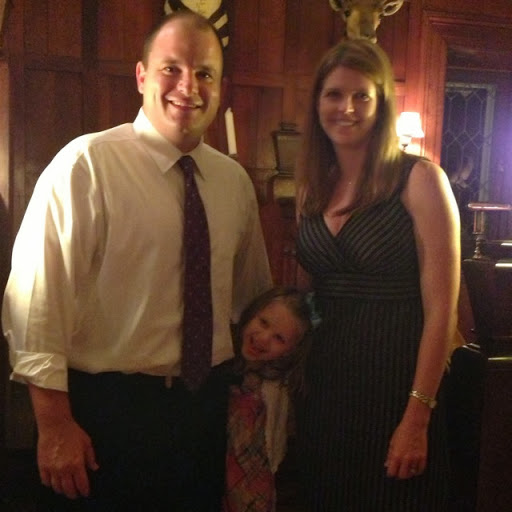
Christopher Lowery

Christopher Lowery

Christopher Lowery
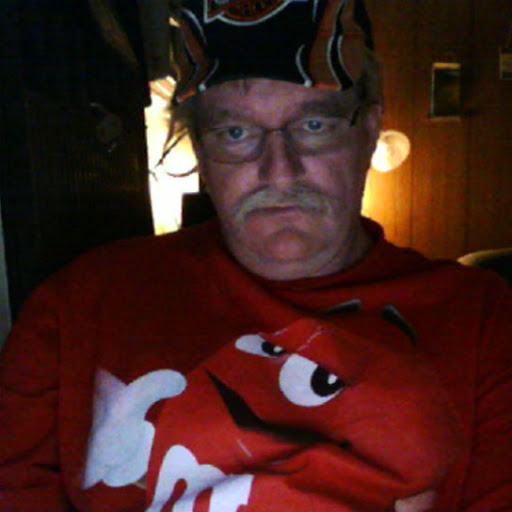
Christopher Lowery

Christopher Lowery
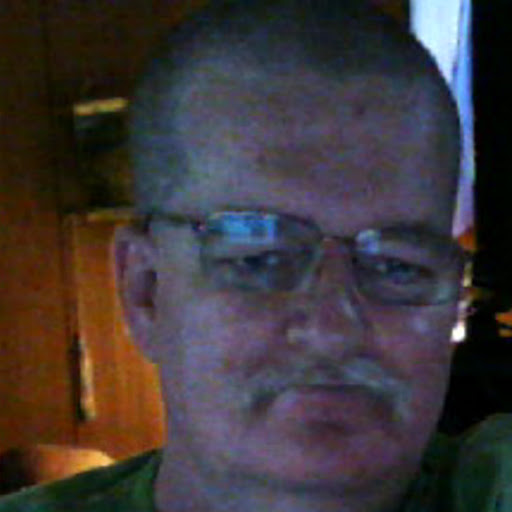
Christopher Lowery

Christopher Lowery
Plaxo

Rev. LOWERY CHRISTOPHER
view sourceDover, OhioZimmer O S P

Christopher Lowery
view sourceYoutube
Classmates

Christopher Lowery
view sourceSchools:
Baldwin Middle School Milledgeville GA 1997-2001

Christopher Lowery
view sourceSchools:
Clover High School Clover SC 2003-2007
Community:
Cathy Greene, Randy Herron

Christopher Lowery
view sourceSchools:
Park City High School Park City MT 2002-2006
Community:
Freida Mattheis, Angelia Meeks, Derrick Burden

Christopher Lowery
view sourceSchools:
Dakota High School Dakota IL 1996-2000
Community:
Rebecca Griffin, Tara Mcguane, Chuck Duncan, Hans Korf

Christopher Lowery
view sourceSchools:
Swett High School Pembroke NC 1999-2003
Community:
Willis Cummings, Shana Smith, Tina Rodgers, Steven Harris, Larry Smith, Virginia Bullard, Charles Strickland, Kisha Hunt, Quinton Oxendine, Brittany Chavis, June Cummings

Christopher Lowery
view sourceSchools:
Gladstone High School Gladstone OR 1975-1979
Community:
Terri Petifer, Julia Foggia, Freb Ashley, Renee Rose, Diana Hiersche, Chris Purvis, Curtis Krebs, Doug Belgarde, Cheryl Steelman

Christopher Lowery
view sourceSchools:
Asheboro High School Asheboro NC 1977-1981
Community:
Valinda Norton, Kim Winslow, Elizabeth Bell, Andrew Cox, Kim Lemonds, Anthony Hayes, Craig Allred, Tammy Grubbs, Vincent Deese, Lisa Bower, Robin Ingold

Christopher Lowery | Luth...
view source
Christopher Lowery
view source
Christopher Lowery
view source
Christopher Lowery
view source
Christopher Lowery
view source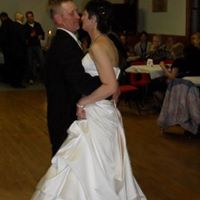
Christopher Lee Lowery
view source
Chris Lowery Harper
view source
Christopher Anthony Lowery
view source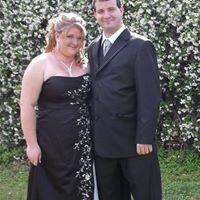
Christopher Lowery
view sourceFlickr
Myspace
Get Report for Christopher W Lowery from McLean, VA, age ~74

















